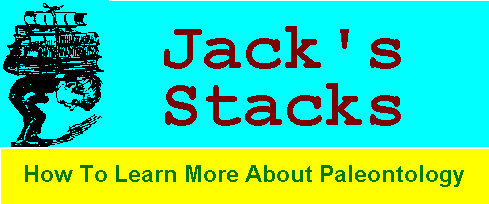

Ian Tattersall and Jeffrey Schwartz have published the most current book available on the story of human evolution. Entitled Extinct Humans and published by Westview Press in 2000, the 256 page illustrated work retails for $40.00.
You may remember from other reviews (The Last Neanderthal and The Fossil Trail) that Ian Tattersall is Curator of the Anthropology Division of the American Museum of Natural History. Jeffery Schwartz is Professor of Physical Anthropology at the University of Pittsburgh. Schwartz's book Sudden Origins was favorably reviewed in my column within the last year.
Tattersall and Schwartz have put together a new look at the story of human evolution combining evidence from the most recent fossil discoveries along with Schwartz's evolutionary thesis from Sudden Origins. The authors have gone against the grain in rethinking the human family tree that has been instilled in the lore of paleoanthropology for almost 100 years - the myth of the missing link in the Great Chain of Being. Their contention is that workers in the field of paleoanthropology are perhaps the last in the broader field of paleontology who cling to the 19th century approach of placing the missing links in the Great Chain. Hopefully you will recall that this chain, as regards human evolution, had white European males at the very top with the "lesser" races below. Extinct Humans delves into the history of this reality in the first chapter.
Tattersall and Schwartz politely but firmly chastize their colleagues for their missing link approach while arguing for the application of cladistics. Far too often a new fossil hominid is discovered whose age falls between two other known species. It is declared the "missing link" between the other two - a genealogical ancestor by default of its age alone. It is becoming more obvious as additional discoveries are made that the temporal coexistence of more than one hominid species at one time is indeed possible.
Extinct Humans covers evolutionary theory in the second chapter as preparation for the discussions of human evolution that follow. This is a reader friendly chapter containing diagrams and drawings that augment the text. The speciation theories as proposed by Schwartz in Sudden Origins are again covered here.
Succeeding chapters cover the important fossil hominids. Each of these chapters delves into the history of the discoveries as well as their interpretation. Tattersall and Schwartz cover a variety of sometimes contentious topics including definitions of hominid and human. As more fossil remains are discovered the certainty of divisions between named species sometimes become blurred. Even the temporal relationships are becoming fuzzy as fossil dating becomes more precise. All of this tends to make the puzzle of speciation and radiation (migration around the world) more complex.
One of my favorite sections was that on the Neanderthals and human extinctions. Neanderthals remain a somewhat sticky problem. It is most commonly thought now that Neanderthals were "cousins" to Homo sapiens and not ancestors. Part of the stickiness has to do with the definition of human. The perplexities arise in that Neanderthals had some degree of technology and some burials would indicate that they had ritualistic practices. At one time, these were used as definitions of what it meant to be human.
Despite what was probably a bushy family tree having more than one hominid coexisting at one time we eventually end up with only one - us. Extinct Humans covers the radiation out of Africa as well as the cultural artifacts of our earliest ancestors.
Extinct Humans is well illustrated with diagrams and photographs closely associated with the text. One of the best features of this work are the excellent color photographs of the actual fossil remains. Since the entire book is printed on glossy paper, the photographs are doubly remarkable. Line drawings are used to supplement the photographs to aid in recognition of important features.
I found Extinct Humans to be a very worthwhile book for those interested in the field of human origins. It is the most current book that you will find in print. I note here that since the publication, yet another new hominid fossil has been found in Africa that could further change our family tree - remember, science does not stand still. Despite this new find, Extinct Humans is well worth checking out. You will undoubtedly learn many new facts about our ancestors even if you have been keeping up with this field through other reading.